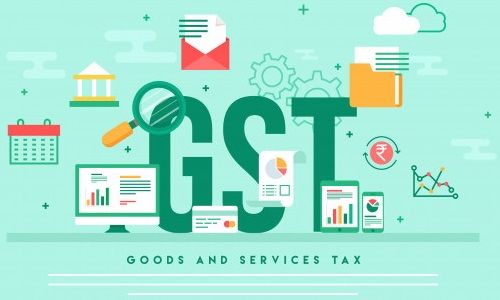
Goods and Services Tax (GST) is a comprehensive indirect tax system implemented in India on July 1, 2017. It replaced several indirect taxes like the Value Added Tax (VAT), service tax, excise duty, and others, with the goal of creating a unified tax system that simplifies the tax structure and increases compliance. Here’s an overview of the key aspects of GST:
1. GST Structure
GST:-
GST is a multi-tiered tax structure that operates at different levels, including central, state, and union territories. It consists of three types of taxes:
- CGST (Central Goods and Services Tax): Tax collected by the Central Government on intra-state sales (within a single state).
- SGST (State Goods and Services Tax): Tax collected by the State Government on intra-state sales.
- IGST (Integrated Goods and Services Tax): Tax collected by the Central Government on inter-state sales (when goods or services move between states).
2. GST Registration
- Mandatory Registration: Businesses with a turnover above the prescribed threshold limit must register for GST. The limit varies depending on the type of business:
- For most businesses, the threshold limit is ₹40 lakhs (₹20 lakhs for special category states).
- For service providers, the limit is ₹20 lakhs (₹10 lakhs for special category states).
- Voluntary Registration: Businesses below the threshold limit can voluntarily opt for GST registration.
- GSTIN (Goods and Services Tax Identification Number): Once registered, businesses receive a unique GSTIN.
3. GST Returns
Businesses are required to file returns at periodic intervals, which include:
- GSTR-1: Outward supply details (sales).
- GSTR-2: Inward supply details (purchases).
- GSTR-3B: Summary of GST liabilities and payments.
- GSTR-9: Annual return.

4. GST Rates
GST is levied at different rates depending on the nature of goods or services. The main rate slabs are:
- 5%: For essential goods like food items, footwear, etc.
- 12%: For goods like processed foods, cosmetics, and some electronics.
- 18%: For services like telecommunications, insurance, and some goods.
- 28%: For luxury items, high-end cars, etc.
Some items are exempt from GST, like healthcare, education, and certain essential goods.
5. Input Tax Credit (ITC)
Businesses can offset the tax they have paid on their purchases (input tax) against the tax they collect on their sales (output tax). This system is known as Input Tax Credit (ITC), and it helps to avoid tax cascading (tax on tax).
- Eligibility for ITC: The business must be GST-registered, and the purchased goods or services must be used in the course of business.
- ITC is allowed only if the supplier has paid taxes to the government.
6. Exemptions and Special Provisions
Certain goods and services are either fully exempt or subject to a lower GST rate. Examples include:
- Exemptions: Educational services, healthcare services, transportation services for the handicapped.
- Special provisions: For businesses with a turnover below the threshold, or for specific sectors such as agriculture.
7. GST on Imports and Exports
- Imports: GST is applicable on imports, and the IGST is levied at the time of import.
- Exports: Exports of goods and services are zero-rated, meaning they are not subject to GST. Exporters can claim a refund of the taxes paid on inputs.
8. Composition Scheme
Small businesses with an annual turnover of up to ₹1.5 crore (₹75 lakhs for service providers) can opt for the Composition Scheme, which allows them to pay tax at a reduced rate on their turnover. However, they cannot collect tax from customers, and they are restricted from claiming ITC.
9. GST Council
The GST Council is the main decision-making body for GST, comprising the Union Finance Minister and State Finance Ministers. The council is responsible for:
- Setting the GST rates.
- Reviewing and recommending changes to GST laws.
- Resolving disputes between the states and the central government.
10. Benefits of GST
- Simplified Tax System: It eliminates multiple taxes and creates a uniform tax structure.
- Boosts Economic Growth: By promoting ease of doing business and reducing tax barriers between states.
- Reduced Tax Cascading: Through the ITC mechanism, businesses can avoid paying tax on tax.
- Increased Compliance: The introduction of GST has resulted in more transparency and better compliance.
11. Challenges of GST
- Complex Compliance: The filing of returns, especially for small businesses, can be time-consuming.
- High Rate for Some Goods: Certain essential goods still attract high tax rates under GST.
- Issues with ITC: There are challenges related to timely claiming of input tax credits, as businesses often face delays or mismatches in input and output tax reporting.
12. Key Terms in GST
- Supply: Any sale, transfer, barter, exchange, rental, lease, or disposal of goods or services.
- Taxable Event: The occurrence of a transaction (e.g., supply of goods) that triggers the imposition of GST.
- Reverse Charge Mechanism (RCM): Under RCM, the recipient of goods/services (instead of the supplier) is responsible for paying the GST.
- Place of Supply: Determines the jurisdiction under which the transaction will be taxed.
Conclusion
GST is a transformative tax reform designed to simplify India’s complex tax structure and foster greater economic integration. However, businesses must stay updated with regulatory changes, maintain proper documentation, and file returns accurately to ensure smooth compliance with the law.
If you have specific questions or need details about GST in particular sectors, I can provide more targeted information.

Leave a Reply